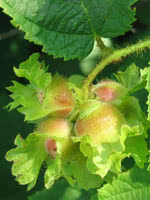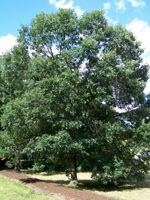Mon-Fri 9am - 5pm Mountain time
American Hazelnut/Filbert vs Swamp White Oak
Corylus americana
Quercus bicolor
NOT AVAILABLE THIS SEASON - MIGHT RETURN
NOT AVAILABLE THIS SEASON - MIGHT RETURN
American Hazelnut is a cold hardy, disease resistant, and long-lived nut tree. It is a great choice for a shrub border for wide, open spaces where it will be allowed to spread. Typically used in naturalization projects for its spreading nature, American Hazelnut is ideal for our zone 4 customers.
If you're a zone 3 prairie customer, don't worry! American Hazelnut can still thrive but needs additional care and protection from our harsh prairie climate.
The edible nuts mature from September to October and are usually roasted or eaten fresh. Make sure you take time to notice American Hazelnut's variable and beautiful fall color that ranges from orange, rose, purplish-red, yellow, and green.
Note: You want more than one hazelnut to improve yields.
The Swamp White Oak is a medium-sized deciduous tree native to North America. It is commonly found in swamps, lowlands, floodplains, and near streams and lakes. The leaves are two-toned, green on top and silvery-white on the undersides, adding to the visual appeal of this popular shade tree.
In the fall, the Swamp White Oak produces acorns which are an important food source for wildlife. It also provides a habitat for the larvae of many butterfly and moth species, playing an important ecological role. Although its growth is slow in the first few years, once the roots are established, it can achieve faster annual growth.
American Hazelnut/Filbert Quick Facts
Swamp White Oak Quick Facts
Toxicity: mildly toxic to humans, cats, and dogs

